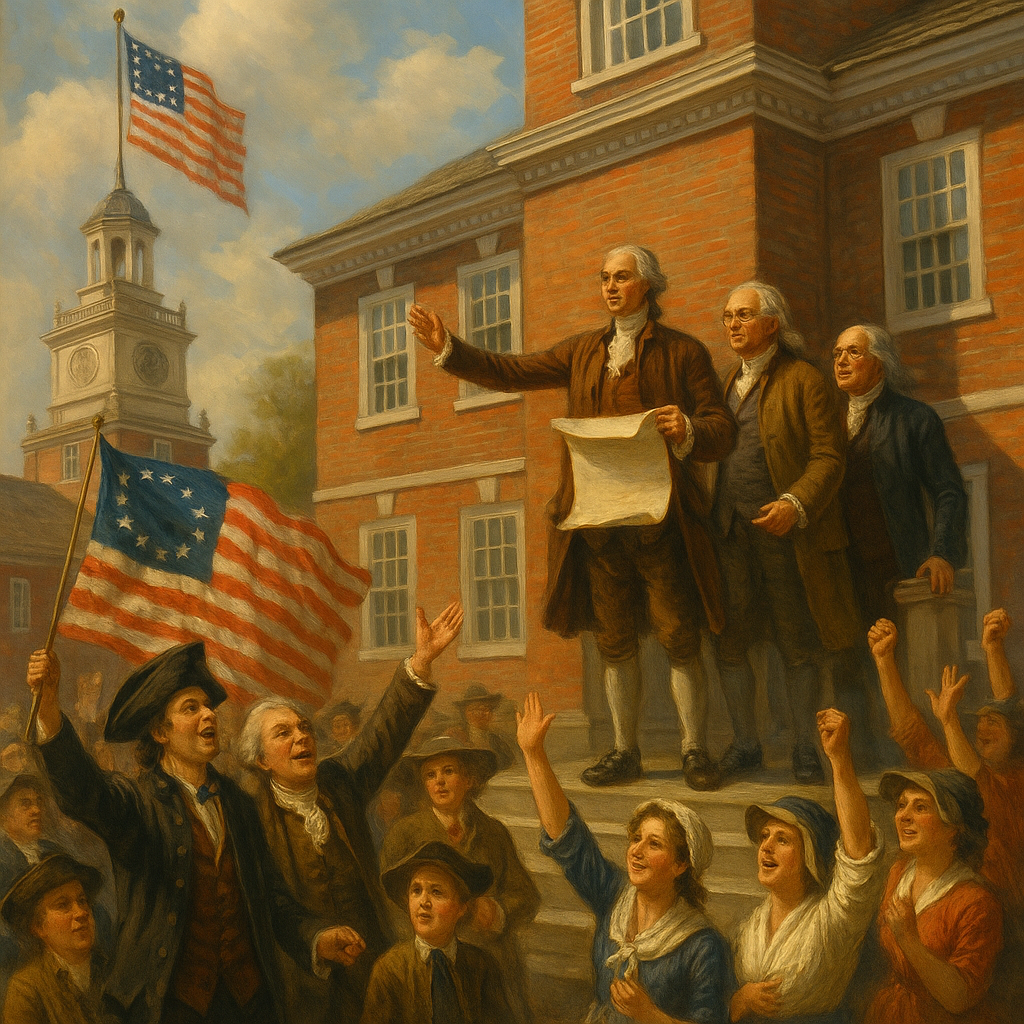The Epic History of July 4th: 17 Shocking Facts About America's Independence Day
Share this Article:

History of July 4th
Introduction to Independence Day
July 4th, also known as Independence Day, marks the birth of the United States as an independent nation. This historic day commemorates the adoption of the Declaration of Independence on July 4, 1776, when the thirteen American colonies broke free from British rule. More than just a patriotic celebration filled with fireworks and parades, it symbolizes the enduring values of liberty, democracy, and the relentless pursuit of self-governance.
The Road to Independence
Colonial Grievances Against Britain
The seeds of revolution were sown through years of mounting tension between the American colonies and the British Crown. Colonists grew increasingly frustrated with oppressive laws and taxes imposed by Parliament—such as the Stamp Act and the Townshend Acts—without any colonial representation. This led to the rallying cry: "No taxation without representation!"
The Continental Congress and the Push for Independence
In 1774, the First Continental Congress convened to discuss colonial grievances. A year later, with conflicts escalating, the Second Continental Congress took bolder steps. The Battles of Lexington and Concord had already signaled the start of armed conflict. Influential voices like John Adams, Samuel Adams, and Richard Henry Lee pushed for complete independence, eventually gaining enough support to pursue a formal declaration.
Drafting the Declaration of Independence
Thomas Jefferson’s Role and the Drafting Process
In June 1776, the Continental Congress appointed a five-man committee to draft the Declaration of Independence, with Thomas Jefferson serving as the principal author. Drawing inspiration from Enlightenment thinkers and prior documents like the Virginia Declaration of Rights, Jefferson eloquently articulated the colonies' justification for separation.
Editing and Signing the Document
Jefferson’s draft was edited by fellow committee members, including John Adams and Benjamin Franklin. After days of debate and revisions, the final version was adopted on July 4, 1776. Though the signing continued for weeks afterward, this date became immortalized as America’s official birthday.
July 4, 1776 – A Nation is Born
Adoption of the Declaration and Public Reaction
The Declaration was first read aloud to the public in Philadelphia on July 8, 1776. The announcement was met with ringing bells, bonfires, and celebrations. Copies of the document were distributed widely, and its powerful words—"We hold these truths to be self-evident..."—echoed across the colonies.
First Celebrations of Independence
Early celebrations included cannon fire, parades, and patriotic speeches. In 1777, just one year later, Philadelphia marked the day with an official celebration, including fireworks—a tradition that endures today.
Key Figures in the Independence Movement
Several leaders were instrumental in America's path to independence:
- George Washington: Commander of the Continental Army and future first president.
- John Adams: Vocal advocate for independence and a key contributor to the Declaration.
- Benjamin Franklin: Diplomatic powerhouse and elder statesman.
- Thomas Jefferson: The primary author of the Declaration.
- Samuel Adams and Patrick Henry: Inspirational orators and revolutionaries.
Their collective efforts laid the foundation for the nation's freedom and democratic values.
Evolution of the July 4th Holiday
19th Century Observances
During the 1800s, Independence Day became more formalized. Communities organized parades, speeches, and fireworks displays. Politicians used the day to promote civic ideals and national unity. It became a focal point for American pride.
Recognition as a Federal Holiday
In 1870, Congress officially declared July 4th a federal holiday. By the 20th century, it had become a symbol of American freedom and a day for family gatherings, BBQs, and community events.
Cultural and Symbolic Importance
July 4th is more than a celebration—it's a reaffirmation of the principles that define the American spirit: liberty, equality, and resilience. It's a time for citizens to reflect on their history, honor their heritage, and cherish the freedoms that were so fiercely fought for.
July 4th Traditions Today
Modern celebrations vary widely across the country. From Boston’s Pops Fireworks Spectacular to Washington D.C.’s National Mall events, Americans celebrate with:
- Fireworks displays
- Parades and patriotic concerts
- Picnics and cookouts
- Flag-raising ceremonies
- Readings of the Declaration of Independence
These traditions reinforce a sense of unity and national pride.
How Other Countries View July 4th
Internationally, July 4th is recognized as a landmark event in world history. Many view it as a beacon of democratic ideals and revolutionary courage. Some expatriates celebrate abroad, and global leaders often acknowledge the significance of America's independence.
Misconceptions About Independence Day
- Myth: All colonies signed the Declaration on July 4.
Fact: Only the adoption occurred on July 4; most signings happened later. - Myth: The Revolutionary War ended on July 4.
Fact: The war continued until 1783. - Myth: The Declaration granted immediate independence.
Fact: It declared it—achieving it took years of war.
FAQs About the History of July 4th
Q1: Why was July 4th chosen as Independence Day?
A1: It marks the date the Continental Congress officially adopted the Declaration of Independence in 1776.
Q2: Who wrote the Declaration of Independence?
A2: Thomas Jefferson was the main author, with input from John Adams, Benjamin Franklin, and others.
Q3: When did July 4th become a national holiday?
A3: It was recognized as a federal holiday in 1870.
Q4: Were fireworks used during the first July 4th celebration?
A4: Yes, fireworks were part of the early celebrations, starting as early as 1777.
Q5: Is the Declaration of Independence still relevant today?
A5: Absolutely. It remains a powerful symbol of freedom and democratic values.
Q6: Did all colonists support independence in 1776?
A6: No, opinions were divided—some remained loyal to Britain, others were undecided or actively opposed.
Conclusion
The history of July 4th is a compelling saga of courage, vision, and defiance. It honors those who risked everything to forge a new nation based on liberty and justice. Today, as fireworks light up the skies and flags wave high, Americans remember not just a date, but a declaration that changed the world forever.
Share with Us:




